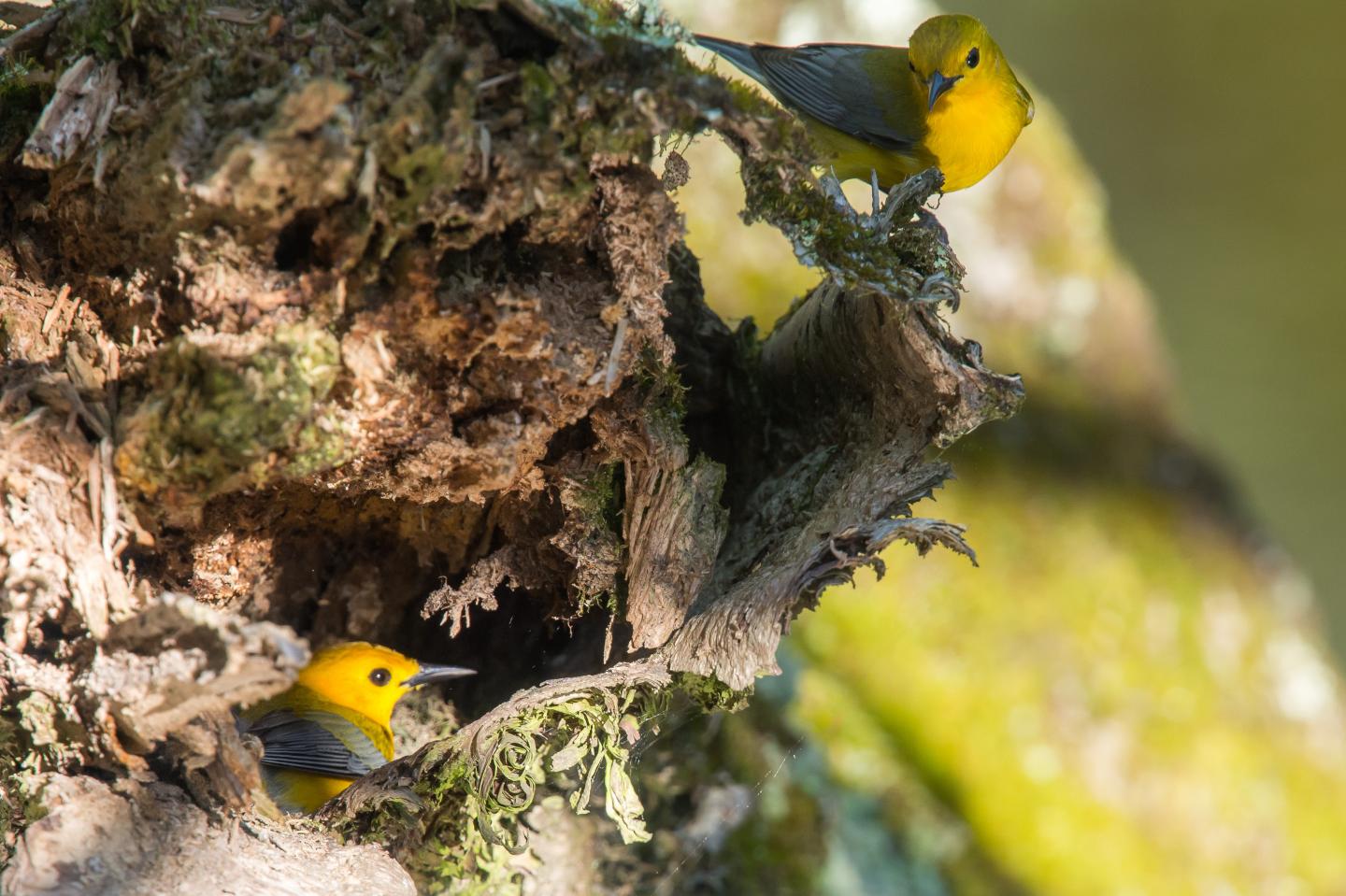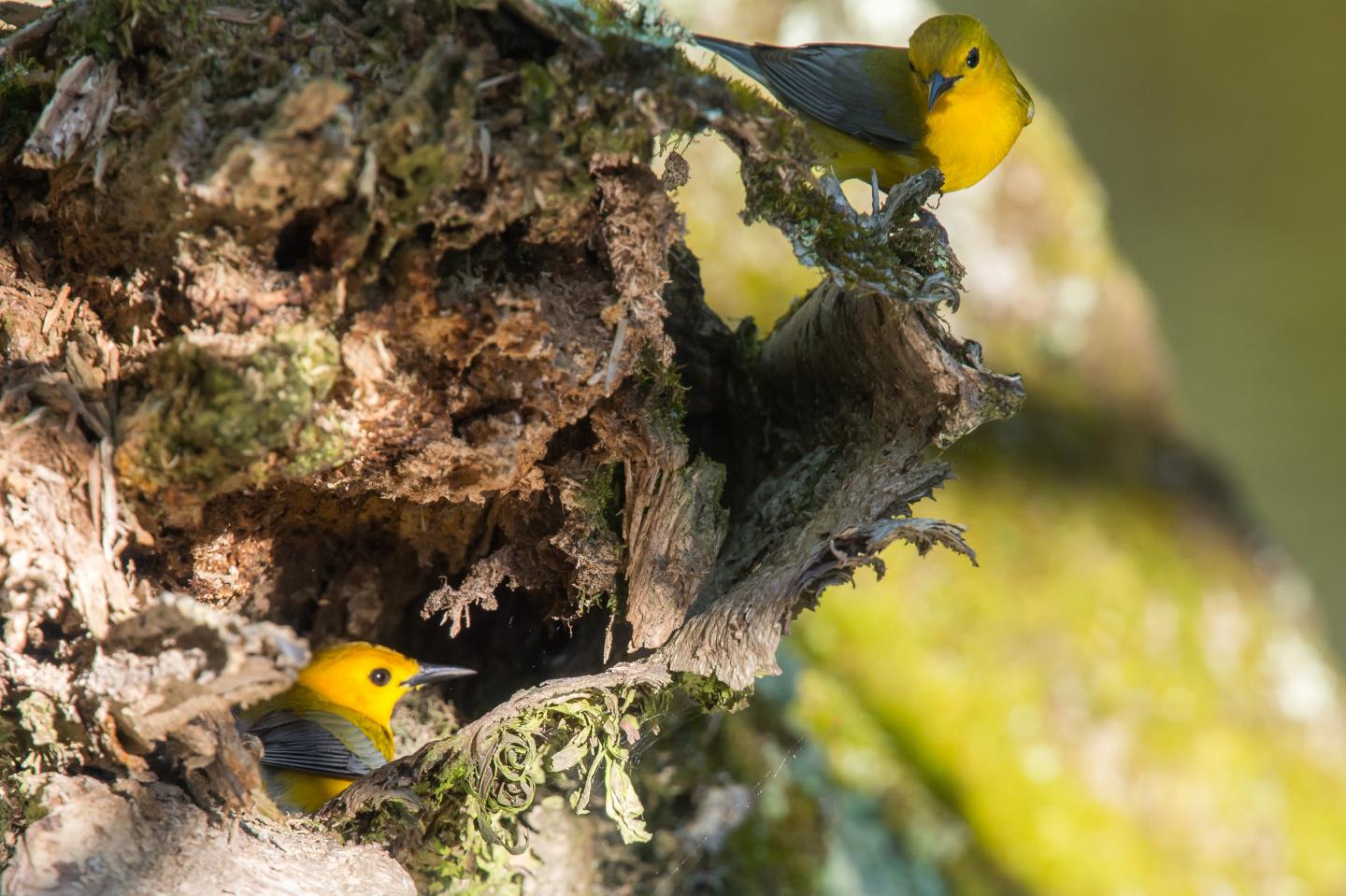
Credit: W.A. Link
In 1966, a U.S. Fish and Wildlife Service biologist named Chan Robbins launched an international program designed to measure changes in bird populations using volunteers recruited to count birds on pre-set routes along country roads. The result, the North American Breeding Bird Survey or BBS, is still going strong more than five decades later. This month The Condor: Ornithological Applications is publishing a special set of research papers to honor the program's fiftieth anniversary.
Unassuming but visionary, Robbins had studied DDT's effects on birds–his reports were edited by Rachel Carson–and he wanted to devise a way of monitoring the health of the continent's bird populations on a large scale. The simple field protocols he developed, able to be carried out by volunteer birdwatchers, have remained largely the same since the program's inception. Today, there are more than 4100 survey routes spanning North America from Alaska to Newfoundland, Florida, and northern Mexico.
The BBS provides long-term data for 424 species, with more limited data for an additional 122. Since data collection began in the 1960s, significantly more species have been declining than increasing. Looking at patterns of change in groups of birds sharing common attributes can be especially useful; for example, only 8 of 24 grassland bird species have seen increases. However, in the short term the picture is slightly rosier–since the survey area was expanded in 1993, 56% of the species surveyed have showed positive trends. Today, modern statistical techniques are letting ornithologists glean more insight from BBS data than ever before.
"The BBS is the only source of long-term, multi-scale population change information for more than 500 species of North American birds," according to the USGS's John Sauer, who has worked with the BBS since 1986 and was one of the co-editors for the special section along with Keith Pardieck and Colleen Handel, also with the USGS. "BBS results have allowed conservationists to identify bird species and regions undergoing population declines, alerting the public and scientists to population changes and facilitating the development of initiatives to better understand declines."
The papers that make up the special section in The Condor include:
- Prioritizing areas for conservation by combining six years of BBS data with remotely sensed environmental data to model the predicted distribution of seven grassland bird species in the Northern Great Plains based on their habitat needs.
- Statistical approaches for model selection in BBS analyses.
- Combining BBS with off-road surveys to estimate population changes for birds that breed in Alaska, where habitats are being rapidly altered due to climate change.
- Using long-term BBS data to rank the vulnerability of more than 460 landbird species, set population objectives, and track progress toward meeting conservation goals.
- Analyzing how well road-based BBS routes represent larger landscapes, using data from 2011 National Land Cover Database, with the conclusion that any land-cover-based roadside bias in BBS data is likely minimal.
- Combining BBS data with separate demographic data to estimate the size of the Atlantic Flyway's Wood Duck population.
- Plus, a review of how the BBS has informed North American bird conservation since its inception.
The papers grew out of a research symposium held at last summer's North American Ornithological Conference in Washington, DC, to commemorate 50 years of the BBS. "The BBS provides a fundamental tool for understanding breeding bird distribution and abundance. We're pleased to publish these papers that celebrate Chan Robbins's vision and the hard work of thousands of volunteers through the latest results and analyses," said Philip Stouffer, Editor-in-Chief of The Condor: Ornithological Applications.
###
The special section on the Breeding Bird Survey will be available July 26, 2017, at http://www.bioone.org/toc/cond/119/3. All of the papers will be open access.
About the journal: The Condor: Ornithological Applications is a peer-reviewed, international journal of ornithology. It began in 1899 as the journal of the Cooper Ornithological Club, a group of ornithologists in California that became the Cooper Ornithological Society, which merged with the American Ornithologists' Union in 2016 to become the American Ornithological Society.
Media Contact
Rebecca Heisman
[email protected]
http://americanornithologypubs.org/





